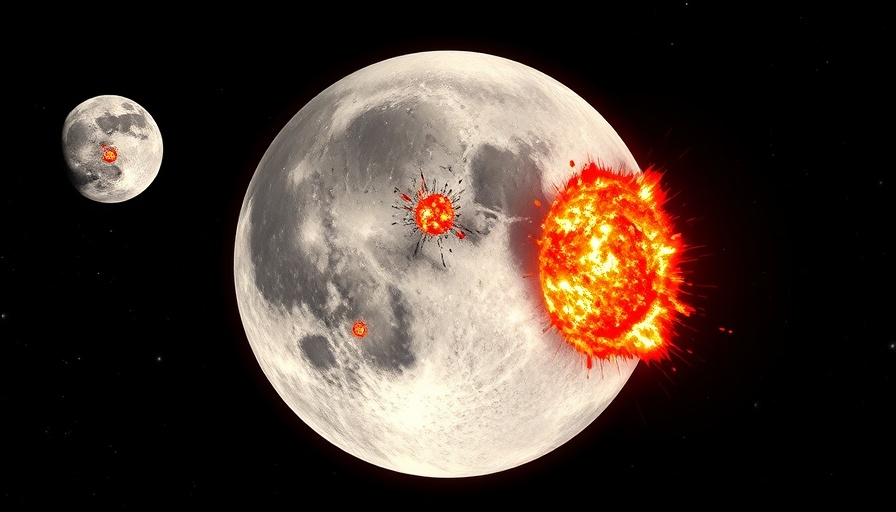
Unraveling the Mysteries of the Moon
Recent findings from the Chang'e-6 mission have marked a significant milestone in lunar exploration. By analyzing samples collected from the South Pole–Aitken (SPA) basin, scientists have established that this giant impact crater was formed approximately 4.25 billion years ago. This discovery, led by Prof. Chen Yi from the Chinese Academy of Sciences, has provided crucial insights into the moon's history and the early solar system.
The Significance of the SPA Basin
The SPA basin is the largest and oldest known impact structure on the moon's surface, situated on its far side. Historically, its age has been ambiguous, with previous estimates ranging widely. Researchers sought to date the formation of the SPA basin more accurately, as understanding its impact on lunar geology could shed light on planetary formation and evolution in the solar system. This project highlights how the SPA basin's formation is believed to coincide with a significant period of asteroid bombardment, a crucial event in the early history of our solar neighborhood.
Insights from Chang'e-6 Samples: A Breakthrough
The Chang'e-6 mission stands out because it returned the first samples from the SPA basin, providing concrete material for analysis. The research team carefully examined around 1,600 fragments from soil samples, discovering 20 norite clasts that revealed information about their origin. Using lead-lead dating techniques on minerals found within these samples, they successfully pinpointed two key impact events at 4.25 and 3.87 billion years respectively. This meticulous approach to sample analysis revealed that the older norites crystallized under varying pressures within a sheet of impact melt associated with the formation of the SPA basin.
Revealing Lunar History: The Importance of Direct Analysis
Previously, scientific understanding of the SPA basin's age was hindered by a lack of concrete material to study. The ability to conduct direct analyses of returned rock samples has resolved many uncertainties. The method of focusing on impact melt rocks allowed researchers to build a clearer narrative around the formative events that shaped the lunar surface. Prof. Chen's team emphasized how this evidence strongly correlates with the geological timeline of the solar system's development.
Future Implications for Lunar Research
This study lays foundational knowledge for future lunar explorations and potential colonization efforts. As nations set their sights on returning to the moon, the implications of understanding the geological history of the moon become increasingly significant. Learning about ancient impacts not only tells us about the moon's formative years but also prepares us for understanding the broader dynamics of our celestial neighborhood, which affects Earth as well.
A New Era of Lunar Exploration
The Chang'e-6 mission exemplifies the growing global ambition in space exploration. As nations advance their space programs, studying the moon serves as a stepping stone to expanding our understanding of space. Whether through deep space missions or establishing lunar bases, these foundational studies of our celestial neighbor's history will inform future technological innovations and research. The knowledge acquired from the moon acts as a vital asset in preparing humanity for future travels to Mars and beyond.
 Add Row
Add Row  Add
Add 




Write A Comment